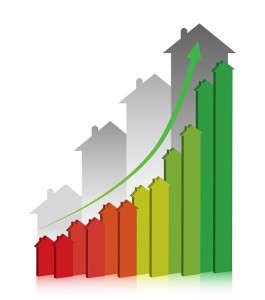 The cost-of-living index measures the relative cost to live in a certain region. There are several theories about how to arrive at the cost-of-living index, but in general it measures the differences in the cost for goods or services required for day-to-day living, including groceries, clothing, utilities, housing, transportation, health care, building materials and eating out, among others. Because it is an index, it is not an exact measurement, but it is a useful tool for selecting a location to live in if you need to move.
The cost-of-living index measures the relative cost to live in a certain region. There are several theories about how to arrive at the cost-of-living index, but in general it measures the differences in the cost for goods or services required for day-to-day living, including groceries, clothing, utilities, housing, transportation, health care, building materials and eating out, among others. Because it is an index, it is not an exact measurement, but it is a useful tool for selecting a location to live in if you need to move.
How is it calculated?
In general, the cost-of-living is calculated by comparing the prices for a representative sample of goods, services and other items that would be in a typical family budget. Bear in mind that your budget may not be “typical” even if you believe it is. A cost-of-living index is different from the consumer price index.
The US Government uses the Consumer Price Index (CPI) produced by the Bureau of Labor Statistics (BLS) to indicate a measure of inflation consumers experience in day-to-day purchases, changes in interest rates, tax rates and seasonal adjustments. Beginning in 2015, the CPI will base its housing calculations on “owners’ equivalent rent” (what a homeowner would pay for their own house in rent) rather than on mortgage payments. This change, according to the BLS, is necessary to remove the “investment” aspect of ownership to the cost-of-living index. The CPI is based on 100 being equal to the cost of living in 1984 in the same location. Adjustments up or down from 100 mean that the cost of living has increased or decreased against the 1984 set point for that location.
Other indices use different market values to produce their calculations and to extrapolate the cost differences from one location to another. For example, the Council for Economic Research divides goods and services into six main categories. From those, it chooses 60 representative items and uses a one-time snapshot of those items from each location to produce its index and compares these prices from location to location.
Other sources take all of these indices into account to produce cost of living comparisons from place to place.
The US Department of State offers a list of such sources to help determine the best place for you to live in your circumstances. One of those, the Cost of Living and Salary Comparison Wizard, works for both the US and Canada. Simple enter your current base salary and the metropolitan location nearest to where you live and work. Then, choose the location to which you want to compare. The results will compare the cost to live in your current location to the new one and also indicate the difference in what you can expect to earn for the same type of job. A graph will indicate the “net change in disposable income” and an explanation of how those numbers may affect your standard of living.
For example: If you earn $50,000 in Dallas and you move to San Diego to take a similar position, you can expect to get paid about 5.8% more ($52,894), but your cost of housing, food, utilities and other items in the cost of living index will increase by 36.3%. All things being equal, you would have $15,000 less disposable income. So, in order to make moving to San Diego make economic sense, you would need to earn more than $68,000.
What if you have to move anyway?
Sometimes, you have no choice about moving. Your company may relocate you, or you may need to be near to a school or university, or near to family. When you have no choice about moving, you can use cost-of-living comparisons to negotiate a better salary.
Your local real estate professionals know specific neighborhoods and suburbs that might have a lower cost of housing, so even if you have to move, we can help you find the right housing to balance the cost of living for your new location.
Compliments of Virtual Results






 Catch Our Feed
Catch Our Feed Subscribe via Email
Subscribe via Email Follow Our Tweets
Follow Our Tweets Friend Us On Facebook
Friend Us On Facebook Watch Us On Youtube
Watch Us On Youtube